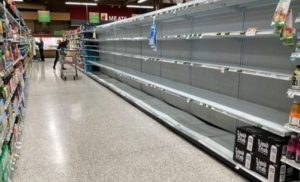Is the Market Pendulum Swinging Back?
What’s in Today’s Report:
- Is the Market Pendulum Swinging Back?
- Weekly Economic Cheat Sheet
Stock futures are lower while the dollar and Treasury yields move higher as part of a continuation of last week’s hawkish money flows, partially thanks to strong data overnight.
Economically, the EU Composite PMI jumped to 52.3 vs. (E) 50.7 due to strength in the service sector, bolstering expectations for increasingly aggressive monetary policy in the months ahead which is weighing on risk assets globally this morning.
Today, economic data will be in focus early with the key report in the U.S. being the PMI Composite Flash (E: 47.2) while Existing Home Sales (E: 4.10M) will also be released. A hot PMI print like we saw in Europe earlier this morning would likely add to the hawkish tone and weigh further on stocks today while a weaker, but not terrible report, could see yields and the dollar ease back and allow for a modest relief rally.
As far as other catalysts go, there are no Fed officials scheduled to speak but there is a 2-Yr Treasury Note auction at 1:00 p.m. ET and if yields continue higher in the wake of the auction, expect more pressure on stocks, especially higher valuation/growth names.
Finally, earning season is winding down but a pre-market release by WMT ($1.52) should shed some light on the health of the consumer and could impact markets as well.





